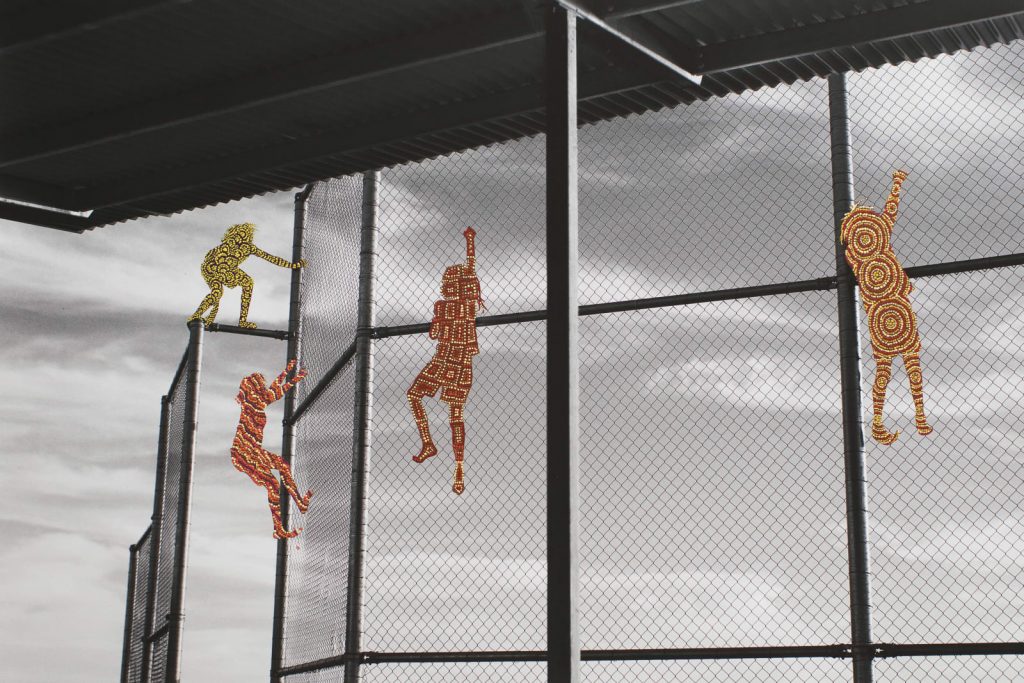
This Way Up (Detail), Restricted with Melinda Napurrurla Wilson, Polly Anne, Napangardi Dixon, Kirsten Nangala Egan and Delena Napaljarri Turner – Photograph Patrick Waterhouse.
“When white explorers created their maps, they dissected this land with arbitrary lines and imposed state borders. They didn’t understand the diversity of nations and tribal people inhabiting this country. They did not know we had our own stories, songlines, boundaries, and nations. Ancient tribal stories criss-cross all over this continent, tracks of totems belonging to different clans and language groups of the land they called Australia.”
– Otto Jungarrayi Sims (Former Chairman of Warlukurlangu Artists)
Can art change our understanding of the past? Can we revise the documents that have informed history? How can Australian First Peoples reclaim interpretive authority through artistic means?
Over the past eight years, groups of Warlpiri artists in Central Australia, in collaboration with the British artist Patrick Waterhouse, have revised a collection of maps, flags, photographs, comic illustrations and other archival material. The resulting work amends assumptions inscribed through the old documents, includes information missing from the historical record, and gives voice to the stories, passed down from generation to generation, of the original custodians of the land.
The largest exhibition of this work to date, “REVISIONS made by Warlpiri of Central Australia and Patrick Waterhouse” opens at the Rautenstrauch-Joest Museum (RJM) in Cologne on 8 December 2023. The exhibition was curated at the Warlukurlangu Art Centres in Yuendumu and Nyirripi. It includes already known works such as “Restricted Images” as well as new ones that deal directly with the RJM archive, among others, and shows the new two-channel video artwork “The True Story” for the first time.
Despite colonisation, the Warlpiri (language) groups have preserved an enduring philosophical worldview shaped by complex ceremonial traditions and artistic practices. In 2014, Patrick Waterhouse travelled to the Warlpiri area for the first time. He had been photographing in Central Australia since 2011 and had gradually acquired documents tracing Australia’s colonial history. Waterhouse presented these photographs, along with archival material from museums and auction houses, to members of the Warlukurlangu Art Centres in the Yuendumu and Nyirippi communities. He invited them to rework the documents using the traditional Warlpiri technique of dot painting, which is practised by almost half of the community.
The artists, aged 16 to 90, applied layers of patterns and symbols to the documents based on their own histories and traditions. This process can be seen as defacement, a correction of what was there, or the revelation of something that had always been hidden beneath the surface. The resulting works confront Australia’s colonial narrative with its Indigenous history, which began more than 50,000 years ago.
SOURCE: Rautenstrauch-Joest-Museum, Cologne (Germany).